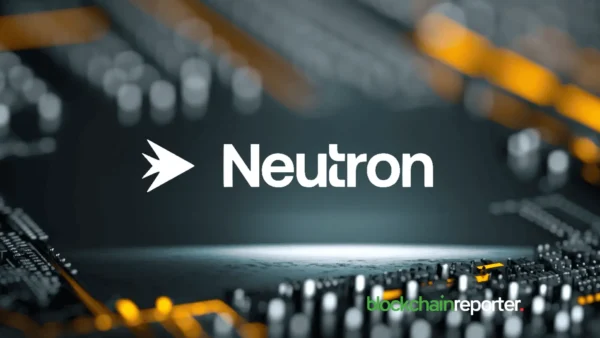
Bitcoin, the global pioneer of cryptocurrency, has paved the way for lots of different digital currencies. As the first decentralized digital currency, Bitcoin set a precedent for what blockchain generation may want to reap, leading to the creation of a diverse ecosystem of cryptocurrencies. Understanding the interplay between Bitcoin and other cryptocurrencies is crucial for navigating the crypto market, and Immediate Code, an investment education firm connecting traders with educational experts, offers the resources and insights needed to explore these relationships effectively.
The Genesis of Cryptocurrencies
Bitcoin was introduced in 2009 by an anonymous entity referred to as Satoshi Nakamoto. Its introduction changed into a reaction to the 2008 financial crisis, to impart a decentralized and secure form of foreign money that operates independently of primary banks and conventional financial systems. Bitcoin’s achievement stimulated the development of a myriad of different cryptocurrencies, each with particular features, use instances, and underlying technology.
Bitcoin: The Gold Standard
Bitcoin is frequently referred to as “virtual gold” due to its function as a shop of value and its restrained supply of 21 million dollars in cash. It remains the most extensively identified and precious cryptocurrency through market capitalization. Bitcoin’s primary features consist of performing as a medium of change, a shop of value, and a unit of account. Its decentralized nature, strong security, and full-size recognition have cemented its position as the main cryptocurrency.
The Emergence of Altcoins
The term “altcoin” refers to any cryptocurrency that is not Bitcoin. Altcoins encompass a wide variety of virtual currencies, together with well-known examples like Ethereum, Ripple (XRP), Litecoin, and more recent entrants, which include Cardano, Solana, and Polkadot. These altcoins frequently intend to address perceived barriers to Bitcoin, which include transaction velocity, scalability, and programmability.
Ethereum (ETH):
Ethereum is perhaps the most tremendous altcoin, recognized for introducing clever contracts and decentralized applications (dApps). Unlike Bitcoin, which generally functions as a digital foreign currency, Ethereum serves as a platform for developers to build and deploy decentralized packages. Its local currency, Ether (ETH), is used to facilitate transactions and incentivize individuals within its surroundings.
Ripple (XRP):
Ripple focuses on enabling speedy and price-effective cross-border payments. Its objectives are to bridge the gap between traditional financial institutions and the international cryptocurrency market by imparting an unbroken answer for international cash transfers. Ripple’s consensus algorithm, which differs from Bitcoin’s evidence-of-work, permits faster transaction confirmations.
Litecoin (LTC):
Often considered the silver to Bitcoin’s gold, Litecoin was created with the aid of Charlie Lee to provide quicker transaction times and an extraordinary hashing algorithm. While it shares many similarities with Bitcoin, Litecoin’s key advantage is its capability to process transactions more quickly, making it a popular preference for smaller, ordinary transactions.
Cardano (ADA) and Solana (SOL):
These more modern altcoins focus on scalability and sustainability. Cardano makes use of an evidence-of-stake consensus mechanism designed to be extra energy-efficient, even as Solana boasts high transaction speeds and coffee expenses, making it appropriate for an extensive range of decentralized packages.
The interconnected ecosystem
The dating between Bitcoin and different cryptocurrencies can be analyzed through numerous lenses, together with market dynamics, technological innovation, and individual adoption.
Market Dynamics:
Bitcoin frequently serves as a bellwether for the cryptocurrency market. When Bitcoin’s rate rises or falls, it normally impacts the prices of other cryptocurrencies. This correlation is due in part to Bitcoin’s dominance and its position as the entry point for plenty of buyers into the cryptocurrency area. However, as the market matures, some altcoins have begun to demonstrate relative independence, pushed by their unique value propositions and use cases.
Technological Innovation:
The development of the latest technologies within the cryptocurrency area frequently begins with altcoins experimenting with unique consensus mechanisms, governance fashions, and application layers. Innovations from altcoins can, in the end, impact Bitcoin’s development. For instance, concepts like clever contracts and evidence-of-stake have stimulated discussions within the Bitcoin network about capacity upgrades and enhancements.
User Adoption:
While Bitcoin enjoys widespread popularity and reputation, altcoins have carved out niches in various sectors. For example, Ethereum’s smart settlement functionality has attracted developers and groups looking to create decentralized programs, while Ripple’s cognizance of cross-border bills has led to partnerships with fundamental monetary institutions. The diversity of use instances amongst altcoins demonstrates the vast applicability of the blockchain era beyond digital currency.
Conclusion
The dating between Bitcoin and different cryptocurrencies is complicated and multifaceted. Bitcoin’s position as the pioneer and gold fashionable of the cryptocurrency global has paved the way for a diverse and progressive environment of altcoins, each contributing unique capabilities and use instances. For investors seeking to navigate this dynamic panorama, Immediate Vortex, a funding training firm connecting buyers with educational professionals, provides treasured resources and insights to help them understand the intricacies of the cryptocurrency marketplace. By staying knowledgeable and adaptable, traders can leverage the ability of both Bitcoin and altcoins to build an assorted and resilient funding portfolio.








